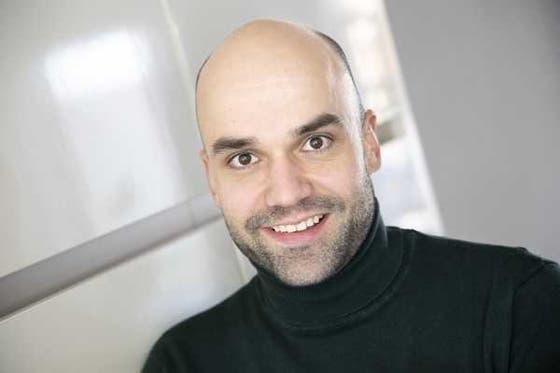Exercise as medicine after a stroke

People sit too much and do not exercise enough. Also after a stroke. This increases the risk of another stroke and premature death. Roderick Wondergem investigated the health risks and developed a coaching program. “Excessive sitting is habitual behavior. To break that habit, confidence in one's own abilities is crucial.”
Every year some 16 million people worldwide suffer from a stroke. In the Netherlands, the number is about 45,000. This number is expected to increase in the coming years, largely due to the ageing of the population. In addition to risk factors such as advanced age and high blood pressure, lifestyle factors play an important role in stroke, including little exercise. “Anyone who has survived a stroke, sits for longer than 9.5 hours a day and exercises moderately or intensively for less than 150 minutes a week is at risk of premature death,” says Roderick Wondergem. As a physiotherapy scientist, he studied the exercise patterns of people after a stroke.
Survivors
“With improved acute care, fewer and fewer people will die of stroke,” says Roderick. “But of the survivors, half die within five years and a quarter have a second stroke. Furthermore, a significant proportion of patients – around 40 percent – experience a decline in daily functioning. It was therefore expected that people would adjust their exercise patterns after an initial stroke, but this hardly ever happens. Whether somebody exercises a lot or a little when they get home from the hospital, that remains the same. The same goes for sitting: when people sit a lot, they keep doing this.”
RISE cohort study
For his research, Roderick analyzed the data from the RISE cohort study. In this study, 200 people were followed at home for 2 years after an initial stroke to map out their sitting and exercise patterns. Roderick distinguishes three groups: 32 percent sit for more than 12 hours a day and barely exercise; 45 percent sit for 10 to 12 hours a day and exercise lightly to moderately (chores in and around the house, cycling/walking) and 22 percent exercise sufficiently moderately to intensively (sports, strenuous cycling/walking).
The first group, which sits for more than 12 hours a day, stands to gain the most. Roderick says, “It makes a great difference whether people mainly sit and don't exercise enough or whether people sit a lot but do exercise enough during the day. After a stroke both groups initially function at the same level, but after a year and a half the first group deteriorates faster and notices this in their daily lives. Every physical activity counts for those people, every physical activity contributes to their health. Breaking unhealthy sitting patterns is more effective for this group than trying to stimulate physical activity.”
Confidence in one's own abilities
In stroke rehabilitation, influencing sitting patterns is a new goal. Roderick says, “It is not a conscious choice to exercise more, something you can schedule in your agenda, but a habit that needs to be broken. That's why we have developed a behavioral intervention with the group of’sitters.' A crucial aspect here is self-effectiveness; that is: confidence in one's own abilities. People are often tired and frightened after a stroke and wonder if they're up to certain efforts. Some automatically think:’I'll just sit down and make sure I don't do anything wrong.’ Whereas it is so important to do things yourself, for example making coffee or running an errand. If you go for a little walk every half hour, your blood pressure already drops by 5 mmHg.”
Intervention program
Participants in the intervention program are coached by a physiotherapist for 15 weeks, during which they see each other 9 times. Furthermore, participants can monitor their own sitting and exercise patterns with an app. Roderick says, “No one can estimate how much time they spend sitting. That feedback is very useful. Moreover, the app shows us for the entire period how someone scores compared to themselves before the start of the program.” To test the intervention program in practice, a pilot study was planned but the corona crisis threw a wrench in the works. In this pilot study 6 participants monitor their sitting and exercise patterns and another 6 participants do the same with the support from a buddy. “So we can see if a buddy offers added value, for example as a sounding board and to discuss practical problems.” Roderick hopes that the pilot study can start in September.
Roderick Wondergem obtained his PhD on Tuesday June 23 for his thesis Movement behavior in people with a first-ever stroke.
